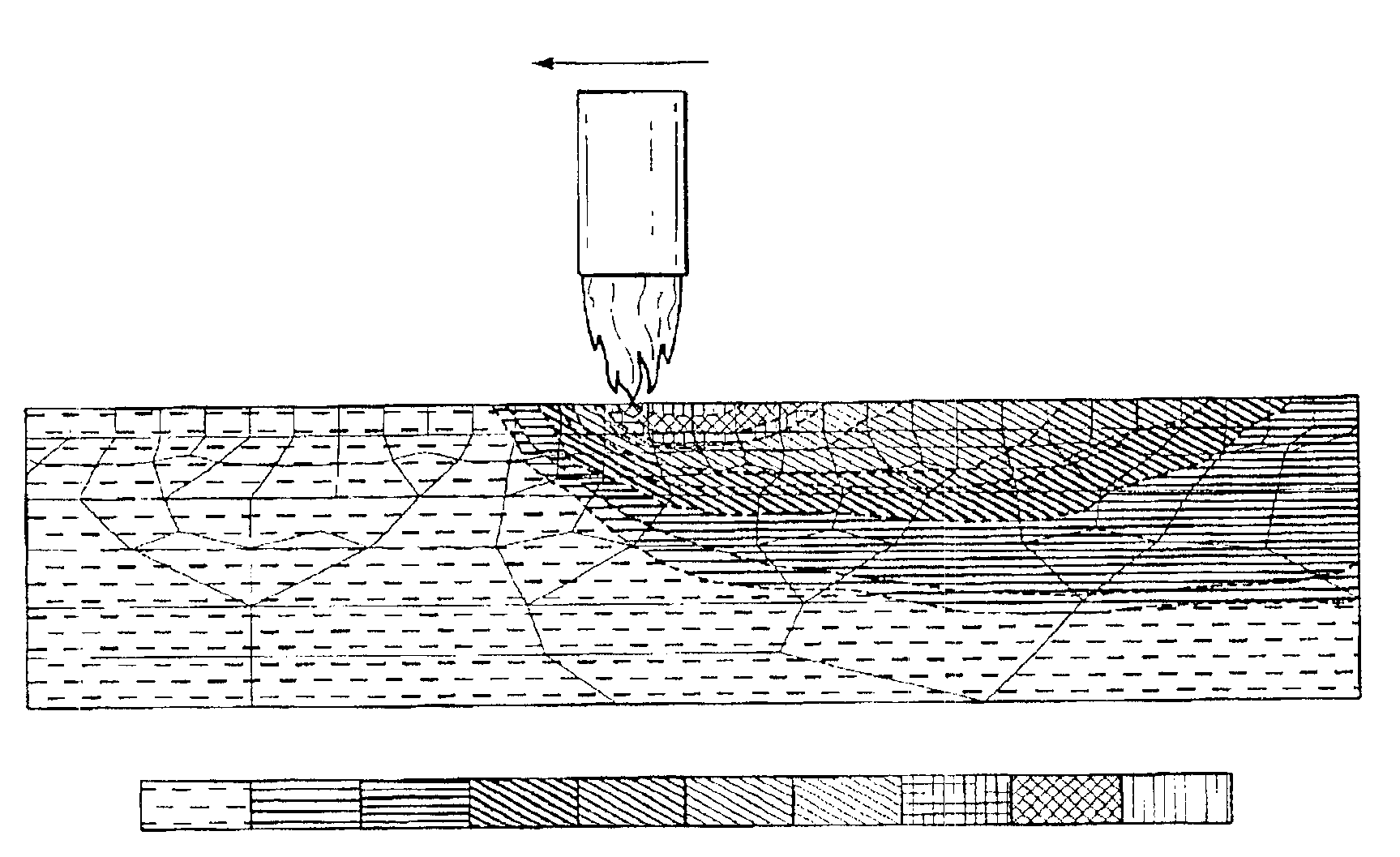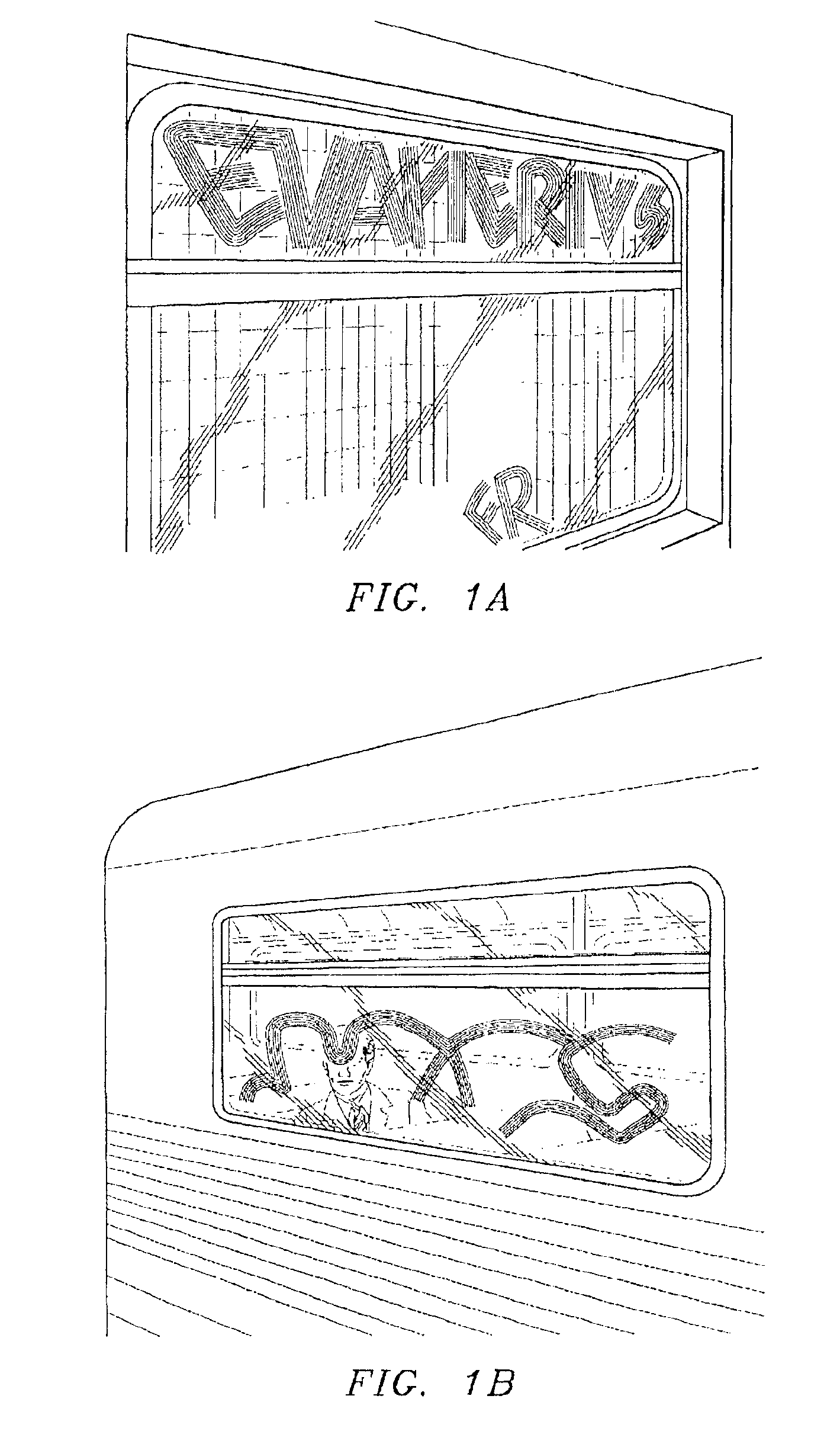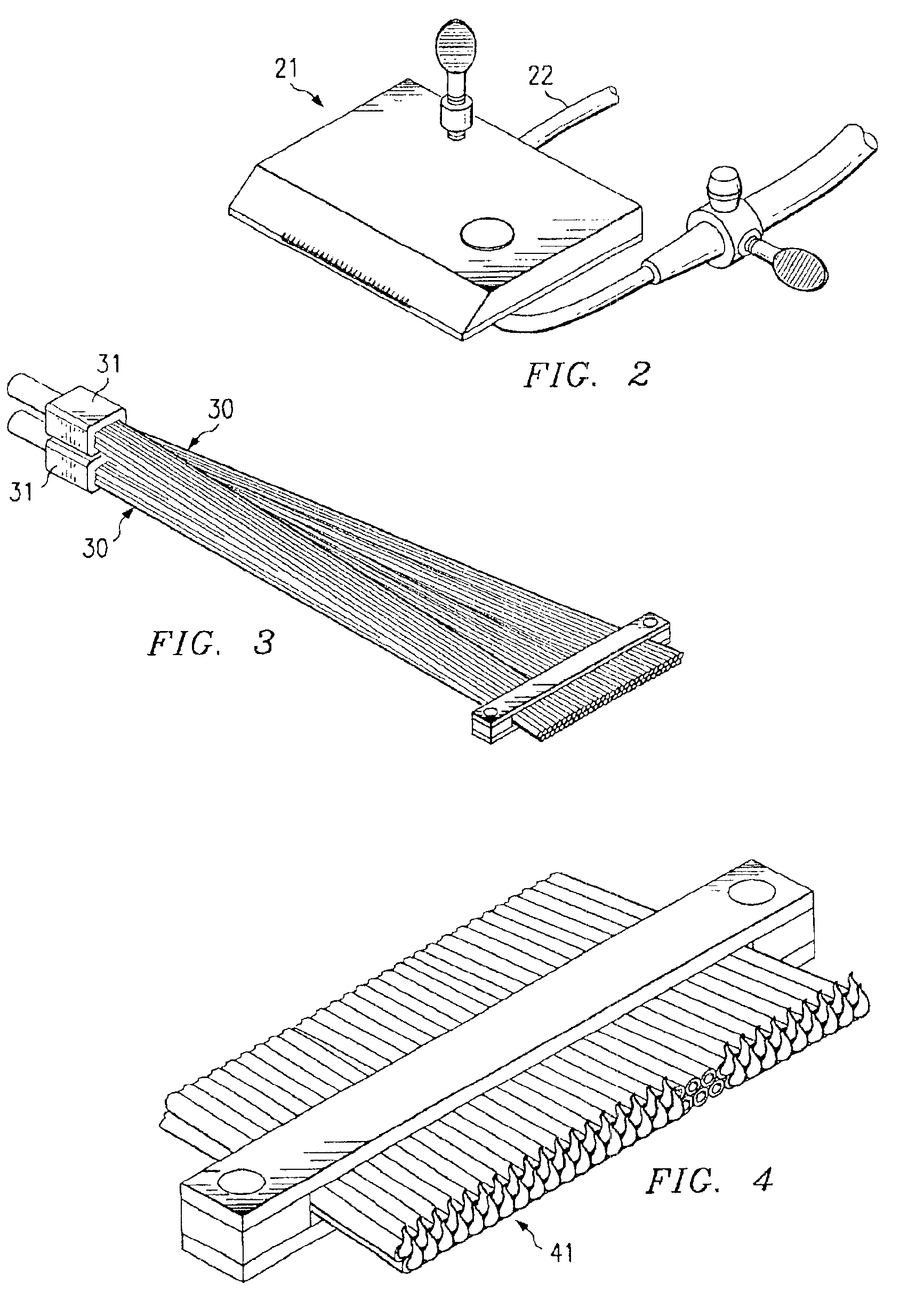Method for controlled surface scratch removal and glass resurfacing
a technology of controlled surface and scratch removal, applied in the direction of glass reforming apparatus, glass tempering apparatus, indirect carbon dioxide mitigation, etc., can solve the problems of graffiti vandalism in public transit systems and city neighborhoods, damage to the external appearance of structural materials, and graffiti vandalism type, etc., to achieve substantial time saving, reduce the effect of distortion of glass panels and reducing the number of scratches
- Summary
- Abstract
- Description
- Claims
- Application Information
AI Technical Summary
Benefits of technology
Problems solved by technology
Method used
Image
Examples
embodiment 1
Exemplary Torch Design Solid, Linear Acetylene-Oxygen Torch
As shown in FIG. 2, this illustrative torch design consists of two aluminum plates with a liner between them shaped so as to produce a wide rectangular channel. The channel connects one of the edges of the assembly 21 with a redistribution chamber (not visible in the figure). The chamber is a rectangular void in the assembly of the same width as the channel that ensures equal pressure along the channel width (2.5 cm×2.5 cm—width by distance from the chamber to the outlet). A premixed acetylene-oxygen mixture is supplied to the redistribution chamber by means of inlet tube 22. The maximum width of the channel is on the order of 0.1 cm; for larger widths the flow velocity of acetylene-oxygen stream exceeds the critical value, at which the stream becomes turbulent and causes either flash back or extinguishment of the flame. At sufficiently low channel width, stable and essentially cylindrical flames (parallel to the outlet) of...
embodiment 2
Exemplary Torch Design Mixed Tube Array Torch
As depicted in FIG. 3, two sets of thin metal tubes 30, preferably 0.9 mm-1.2 mm in diameter, are connected to fittings 31 for supply of fuel or oxygen at one end and welded together at the other. The result is a series of small burners spaced close enough to produce, as shown in FIG. 4, a in a one-dimensional, alternating array of ends of tubes carrying fuel and oxygen which can produce a linear flame 41. Mixing between the parallel, alternating stream of oxygen and fuel is sufficient to produce a flame having satisfactory temperatures for melting glass or other window materials. Because the velocity of oxygen can be controlled independently from the velocity of the fuel, velocity of the flames may be increased above the usual flame velocity Vf, thus decreasing the buoyancy effects (or tendency for the flame to rise upward) on the flame. The burner is safe since there are no enclosed volumes with the premixed gases. Satisfactory tempera...
embodiment 3
Exemplary Torch Design Linear Multi-Orifice Premixed Propane-Oxygen Nozzle
The nozzle, shown in FIG. 5, has a row of holes 50 spaced 0.08″ apart linearly along a center line. These through holes have a diameter of 0.04″ and are approximately 0.5″ long. They are connected to the fuel supply (not shown) by a 0.25″ hole 51 drilled perpendicular to the length of the holes and along the length of the row. The pre mixed propane and oxygen gases leave the tip through a small orifice and are ignited in the air, which create a flame of uniform temperature at a short distance about 0.3″ from the end of the nozzle.
The two-dimensional temperature profile of the flame cross section for this nozzle was studied experimentally under the volume flow rate of 6.0 liter / min for propane and 20.4 liter / min for oxygen (mixing ratio 1:3.4) at room temperature 25° C. The temperatures of the flame were measured using B-type high temperature thermocouple, which was mounted on a moving slide and scanned across...
PUM
| Property | Measurement | Unit |
|---|---|---|
| width | aaaaa | aaaaa |
| distance | aaaaa | aaaaa |
| moving velocity | aaaaa | aaaaa |
Abstract
Description
Claims
Application Information
 Login to View More
Login to View More - R&D
- Intellectual Property
- Life Sciences
- Materials
- Tech Scout
- Unparalleled Data Quality
- Higher Quality Content
- 60% Fewer Hallucinations
Browse by: Latest US Patents, China's latest patents, Technical Efficacy Thesaurus, Application Domain, Technology Topic, Popular Technical Reports.
© 2025 PatSnap. All rights reserved.Legal|Privacy policy|Modern Slavery Act Transparency Statement|Sitemap|About US| Contact US: help@patsnap.com



